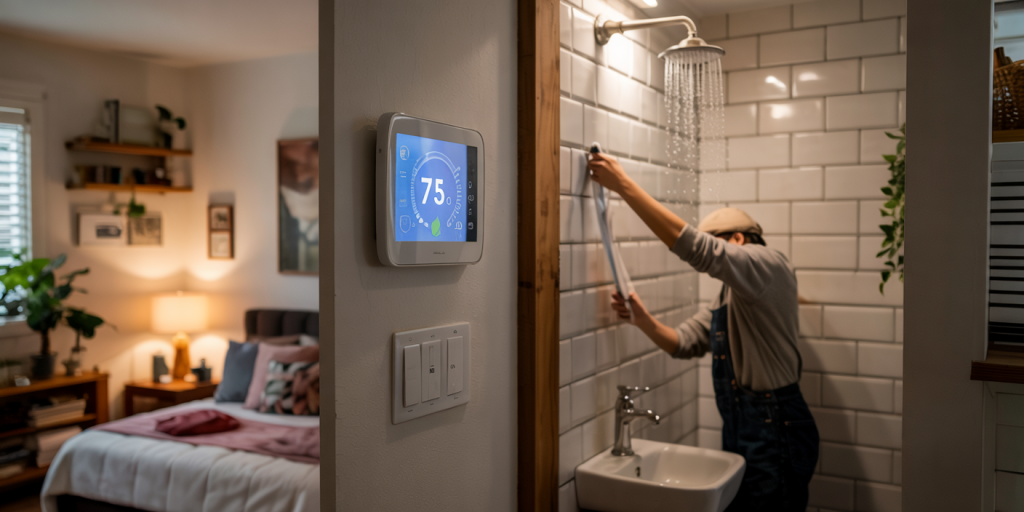Money Leaks: Stop Wasting Cash Without Realizing It
In today’s fast-paced world, managing personal finances efficiently is more critical than ever. Despite efforts to save and budget, many individuals experience “money leaks” – small but persistent outflows of cash that quietly drain their resources. These leaks often go unnoticed until they culminate in significant financial strain. Identifying and plugging these leaks early can greatly enhance your financial stability, allowing more funds to be directed toward meaningful goals rather than unnecessary waste.
A recent study by the Federal Reserve found that nearly 40% of adults in the United States do not have enough savings to cover a $400 emergency, highlighting the widespread challenge of unintentional money loss. This article delves into common money leaks, the psychology behind wasteful spending, and practical approaches to stop wasting cash without even realizing it. With actionable insights supported by real examples and data, you will be equipped to tighten your financial belt while maintaining a comfortable lifestyle.
Hidden Subscriptions and Recurring Charges: The Silent Drains
One of the most insidious forms of money leaks is the proliferation of hidden subscriptions and automatic recurring charges. Services such as streaming platforms, gym memberships, software licenses, and subscription boxes often renew automatically, drawing money each month without prompting a review of necessity or usage. According to a 2023 report by West Monroe Partners, the average American spends around $237 per month on 13 subscription services, but nearly 17% of these are never used.

Take the example of Lisa, who subscribed to three different streaming services, two meal kit deliveries, and multiple app subscriptions over years. She rarely used more than one streaming platform regularly and stopped trying meal kits within a month, but her bank statements continued to show charges totaling over $70 every month. By auditing and cancelling unused subscriptions, Lisa redirected nearly $900 annually back into her savings.
To combat these silent leaks, financial experts recommend conducting monthly subscription reviews. Utilizing services like Truebill or Mint can help identify recurring charges, categorize them, and provide alternatives if reduction is not feasible. Setting calendar reminders to review bank and credit card statements can also prevent unnoticed bleed. The table below illustrates potential savings by cutting down common subscription categories:
| Subscription Category | Average Monthly Cost | Potential Annual Savings if Cancelled |
|---|---|---|
| Streaming Services | $15 – $30 | $180 – $360 |
| Gym Membership | $30 – $50 | $360 – $600 |
| Meal Kit Deliveries | $60 – $90 | $720 – $1080 |
| App Subscriptions (Games/Tools) | $5 – $15 | $60 – $180 |
Regular evaluation and pruning of subscriptions can instantly stop unnecessary cash flow and free funds for more purposeful spending or investments.
Impulse Buying Driven by Psychological Triggers
Impulse buying is a common money leak that most people underestimate. Retailers and online platforms are experts at triggering spontaneous purchases by leveraging psychological principles such as scarcity, social proof, and instant gratification. The National Retail Federation estimates that nearly 60% of shoppers have made an unplanned purchase in the last month, costing the average person approximately $400 annually.

Consider the story of Mark, a software engineer who frequently made small purchases on Amazon and other e-commerce sites, often influenced by flash sales or “limited-time offers.” Over months, these seemingly insignificant orders added up to more than $1000, substantially impacting his ability to save for a down payment on a house.
Combatting impulse buying requires conscious awareness of spending triggers and detachment techniques. Some effective strategies include creating waiting periods before purchases (e.g., 24-48 hours), unsubscribing from promotional emails, and using cash instead of credit cards to increase spending visibility. Additionally, adopting a needs versus wants mindset encourages informed purchasing decisions.
Incorporating behavioral finance insights into daily habits greatly reduces impulsive money leaks. A survey by the Consumer Federation of America found that consumers who adopted a “cooling-off period” before major purchases reduced impulsive shopping expenditures by up to 25%—leading to monthly savings of $100 or more.
Overlooking Small Daily Expenses: The “Pennies That Add Up” Effect
Small daily expenses frequently go unnoticed but collectively represent a significant source of wasted money. Spending just $5 on coffee every workday adds up to roughly $100 per month or $1200 per year, a fact often ignored by habitual coffee drinkers. Similarly, consistent toll fees, parking charges, or convenience store snacks can quietly erode budgets over time.
Real-world case studies emphasize this issue. A 2022 survey by Bankrate revealed that 49% of Americans underestimate their daily expenses by at least 20%. Consider Hannah, who routinely stopped for a $4 bottled water and occasional snack from a convenience store. By switching to a refillable bottle and preparing snacks at home, she saved close to $60 a month—a significant boost to her monthly budget over the year.
Tracking expenses with budgeting apps such as YNAB (You Need A Budget) or PocketGuard provides granular insight into daily spending habits and highlights overlooked leaks. Creating daily or weekly spending caps for discretionary items assists in controlling these small leaks.
Furthermore, investing in tools like refillable containers or tapping free tap water instead of purchasing bottled water benefits both finances and the environment—a true win-win scenario.
Inefficient Utility Usage and Wasted Energy
Home utilities remain a major yet often neglected source of money leaks. Inefficient use of electricity, heating, water, and even internet services leads to inflated bills that many do not actively scrutinize. The U.S. Energy Information Administration reports that the average American household spends more than $115 per month on electricity alone, with up to 30% of this attributed to wasteful practices.
Examples include leaving lights on in empty rooms, using outdated appliances with low energy efficiency ratings, or failing to insulate homes properly. David, a homeowner in Chicago, realized his heating bills were excessively high during winter months. Upon inspection, he discovered gaps in window insulation and old ducting which caused heat loss. After upgrading his home insulation and switching to smart thermostats, he cut heating costs by nearly 25%, saving $300 annually.
Similarly, water waste is a significant issue, especially in areas with high water tariffs or drought conditions. Installing low-flow showerheads, fixing leaks promptly, and using water-efficient appliances can significantly reduce bills. Each leaking faucet can waste up to 3,000 gallons of water yearly, equating to about $30-$50 that could otherwise be saved.
Table: Estimated Monthly Savings from Energy and Water Efficiency Upgrades
| Upgrade Type | Average Monthly Savings | One-Time Cost Estimate | ROI Period (Months) |
|---|---|---|---|
| Smart Thermostats | $15 – $25 | $120 – $250 | 6 – 12 |
| LED Lighting Replacement | $5 – $10 | $50 – $150 | 6 – 15 |
| Low-Flow Showerhead | $10 – $20 | $25 – $50 | 2 – 5 |
| Fixing Faucet Leaks | $5 – $8 | Minimal (Plumbing DIY) | Immediate |
Adopting energy mindfulness not only curbs money leaks but also contributes to environmental sustainability—a compelling argument for long-term savings and ecological responsibility.

Unnecessary Bank Fees and Poor Financial Product Choices
Bank fees are another stealthy money leak often dismissed as unavoidable. Monthly maintenance fees, overdraft charges, ATM fees, and service penalties collectively drain an estimated $33 billion annually from U.S. consumers, according to a 2021 report by the Consumer Financial Protection Bureau.
For example, Mike frequently incurred overdraft fees of $35 each time his account dropped below zero. Over a year, these fees accounted for over $400 wasted. Switching to a bank with no overdraft fees, setting up low balance alerts, and linking accounts prevented these unnecessary charges.
Poor financial product decisions also exacerbate money leaks. High-interest credit cards, costly personal loans, or inadequate insurance policies lead to greater expenditures than needed. For instance, carrying balances on credit cards with interest above 20% can cost hundreds in extra charges annually. Refinancing options or consolidating debt at lower rates can generate important savings.
A comparative table illustrates fee differences among typical banking services:
| Banking Service | Average Fee | Fee Avoidance Strategy |
|---|---|---|
| Overdraft Fee | $33 – $35 per incident | Link savings account, overdraft protection |
| Monthly Account Fee | $5 – $15 | Maintain minimum balance, switch accounts |
| ATM Fee | $2 – $3 per withdrawal | Use in-network ATMs only |
| Foreign Transaction Fee | 1% – 3% of purchase | Use cards with no foreign fees |
Prudent financial planning involves regularly reviewing bank statements, negotiating fees, and exploring better product alternatives to prevent these costly leaks.
Future Perspectives: Harnessing Technology to Minimize Money Leaks
The future of personal finance management looks promising with the integration of advanced technologies aimed at identifying and preventing money leaks. Artificial intelligence (AI), machine learning, and real-time data analytics are transforming how individuals monitor spending, optimize budgets, and negotiate the financial marketplace.
Emerging fintech applications now offer predictive analytics to warn users about potential over-expenditures or suggest personalized saving strategies based on behavioral insights. For example, AI-driven chatbots provide round-the-clock support on tracking subscriptions, reminding bill payments, and highlighting unusual transactions that could indicate money leaks.
Open banking initiatives allow users to consolidate cross-platform financial accounts, creating a comprehensive dashboard for financial health monitoring. This level of visibility enables proactive intervention before small leaks expand into larger problems.
Moreover, blockchain technology holds potential to revolutionize transparency in billing, reducing errors and unscrupulous fees. Smart contracts could automate payments only upon verified service delivery, minimizing overpayments.
While technological advancement encourages more sophisticated identification of money leaks, human discipline and informed decision-making remain indispensable. A combined approach that integrates technology with financial literacy and behavioral change offers the best chance to halt the silent drain of cash and achieve long-term fiscal goals.
—
In summary, unintentional money leaks are widespread but fixable with vigilance and strategic action. By auditing subscriptions, controlling impulse buys, monitoring small daily expenses, upgrading home efficiency, and choosing better financial products, individuals can reclaim substantial amounts of cash. The future will bring smarter tools to aid this process, but ultimately, awareness and consistent management will define financial success. Stopping money leaks today is the first step toward building a secure and prosperous tomorrow.
